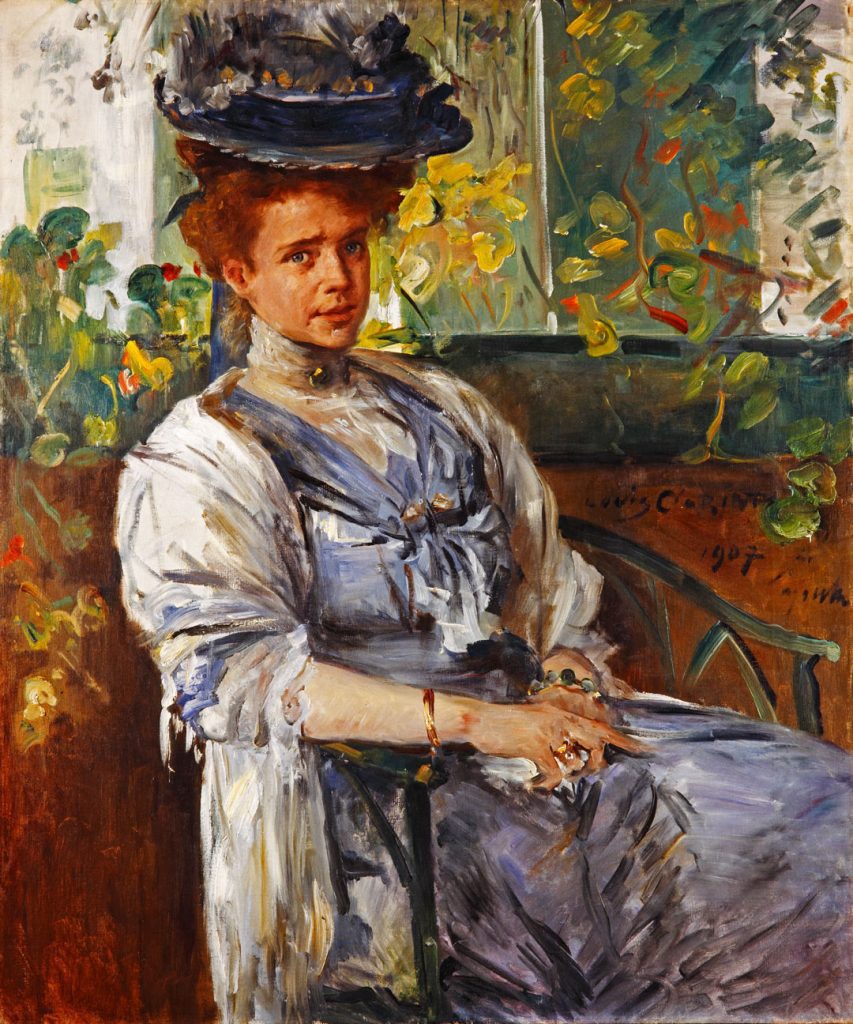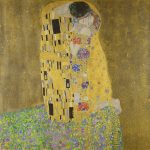
The portrait of Greta Moll by Lovis Corinth is more than just a brushstroke of German art history—it’s a symbol of an era marked by innovation, conflict, and transformation. Painted in 1906, this iconic work has captivated viewers, sparked legal battles, and added layers to the story of one of modernism’s most compelling figures. But Greta Moll was not merely a subject on canvas; she was an artist, curator, and devoted supporter of modernist ideals. Let’s explore Greta’s life and influence, from her early days in Berlin’s vibrant art scene to her marriage with Oskar Moll and her enduring impact on 20th-century modernist art.
Early Life and Background of Greta Moll
Greta Moll, born Margarethe Luise “Greta” Hielscher in 1884 in Mülheim an der Ruhr, was surrounded by culture from a young age. Raised in a family that valued the arts, Greta developed an early passion for painting, music, and literature. Her talents were nurtured by a combination of formal schooling and the influence of Germany’s burgeoning modernist movement.
When Greta moved to Berlin in her twenties, she was immediately drawn to the city’s dynamic art scene. Here, she encountered avant-garde artists and developed connections that would shape her artistic journey. Among her contemporaries were Hans Purrmann and Lovis Corinth, who recognized her as both a creative spirit and a potential muse.
It was during this vibrant phase that Greta met Oskar Moll, a talented painter and art theorist known for his experimental approach to modernism. Their mutual love for the arts blossomed into a romance, culminating in marriage. While Oskar pursued painting and teaching, Greta played a crucial role in supporting his career, often serving as his subject, critic, and collaborator.
Greta Moll’s Role as a Muse in German Modernism
Greta’s most famous portrayal came through Lovis Corinth’s 1906 painting, which depicted her as a modern Venus—self-assured, enigmatic, and undeniably human. The portrait, characterized by Corinth’s bold brushwork and expressive style, represented a shift in how women were depicted in art. Unlike traditional, passive portrayals, Greta was presented as an active participant in her own representation.
Why was this portrait so significant? In an era where female figures were often idealized or objectified, Corinth’s painting offered a refreshing realism. Greta’s direct gaze and confident posture challenged the viewer, emphasizing her agency rather than reducing her to an aesthetic object.
But Greta was not only a subject of Corinth’s creativity. She actively engaged with the artist during the painting’s creation, discussing elements of composition and color. This collaboration added depth to the portrait, making it a testament to Greta’s influence within German modernism.
Greta Moll’s Marriage to Oskar Moll
Greta Moll’s relationship with Oskar Moll was marked by a blend of love and mutual artistic ambition. Oskar, known for his modernist landscapes and abstract forms, often painted Greta, capturing her spirit in a variety of styles. Their marriage was not only a personal union but also an artistic partnership.
Oskar Moll’s rise as a painter and educator, including his roles at the Kunstakademie in Dresden and the Breslau Academy of Art, was deeply influenced by Greta’s support. Greta was not only a model but also an active participant in curating and promoting Oskar’s work. During the couple’s travels through France and Italy, Greta absorbed influences from European modernist circles, bringing fresh ideas back to Germany.
However, the rise of National Socialism in the 1930s posed severe challenges. As modernists, the Molls faced increasing pressure from a regime that rejected their artistic ideals. Despite the constraints, Greta remained resilient, working to preserve her husband’s legacy and the integrity of their art collection.
The Art Collection of Greta Moll
In addition to her role as a muse, Greta was a passionate curator. The Greta Moll art collection represented a blend of German modernist works, featuring pieces by Oskar Moll, Lovis Corinth, and other contemporaries. Greta’s curatorial choices emphasized the vibrancy of the movement, showcasing works that embodied the boldness and experimental spirit of the era.
Greta’s collection wasn’t just a static assembly of artworks; it was a living testament to her advocacy for modernist ideals. She carefully selected pieces that not only highlighted the artists’ techniques but also captured the cultural zeitgeist of the early 20th century.
One of her notable curation efforts was the promotion of female modernists. Greta believed in elevating women’s roles within the art world, ensuring that female artists were represented alongside their male counterparts. This focus aligns with the broader context of female figures in modern art, where Greta herself was both a subject and a curator.
Greta Moll’s Later Years and Legacy
As World War II unfolded, the Molls’ art collection faced threats of confiscation and destruction. Greta worked tirelessly to protect her family’s artworks, making difficult decisions to ensure their survival during the tumultuous years of National Socialism. Her efforts were not in vain; many pieces remained intact, serving as a testament to her determination.
After the war, Greta Moll continued to advocate for modernist art, even as the German art world struggled to rebuild. Her influence persisted, and exhibitions featuring works from the Greta Moll art collection drew renewed interest. Greta’s story has been revisited through retrospectives, where her contributions as a muse, curator, and artist are celebrated.
Despite these efforts, controversies have shadowed Greta’s legacy, particularly the ownership of Lovis Corinth’s 1906 portrait of her. The painting became a focal point in legal battles over restitution, with claims challenging its rightful place. These disputes highlight the complex intersections of art, war, and personal legacy.
The Controversies Around Greta Moll’s Portraits
The portrait by Lovis Corinth has sparked debates about provenance and ownership, especially in the context of wartime displacement. After the Molls’ deaths, the painting’s journey through auctions and private collections led to questions about its legal and ethical status. While some see it as an integral part of German cultural heritage, others argue for its return to the Moll family.
This issue extends beyond the Corinth painting; several works from the Greta Moll art collection have also been contested. The legal wrangling over ownership underscores broader ethical dilemmas in the art world, where historical wrongs collide with contemporary justice.
Key Takeaways
- Greta Moll was a pivotal figure in German modernist art, both as a muse and a curator.
- Her marriage to Oskar Moll was both a personal and artistic collaboration that shaped her life.
- Lovis Corinth’s 1906 portrait of Greta Moll remains an iconic yet controversial symbol of German modernism.
- Greta Moll’s collection highlighted modernist ideals, showcasing both male and female artists.
- The legacy of Greta Moll is complex, marked by artistic achievements, personal resilience, and legal controversies.
FAQs
Who was Greta Moll?
Greta Moll was a German artist and muse, known for her significant role in German modernist art.
Why is Greta Moll’s portrait by Lovis Corinth famous?
The portrait is renowned for its bold modernist style and the legal controversies over its ownership.
What is Greta Moll’s connection to Oskar Moll?
Greta Moll was Oskar Moll’s wife, muse, and collaborator in both art and life.
Where is the Greta Moll painting now?
The painting’s ownership is disputed, with ongoing legal battles over its rightful place.
How did Greta Moll influence modern art?
Greta Moll influenced modernism through her roles as a muse, curator, and supporter of avant-garde artists.




